"These angelicas grow wild near abandoned ruins and damp places. In February the Salentines go feverishly in search of them. This is the moment when the incipient flower-heads are still enclosed in their sheaths right up against the greenish-purple stem. You cut these sheaths with a knife". --Patience Grey, Honey From a Weed.
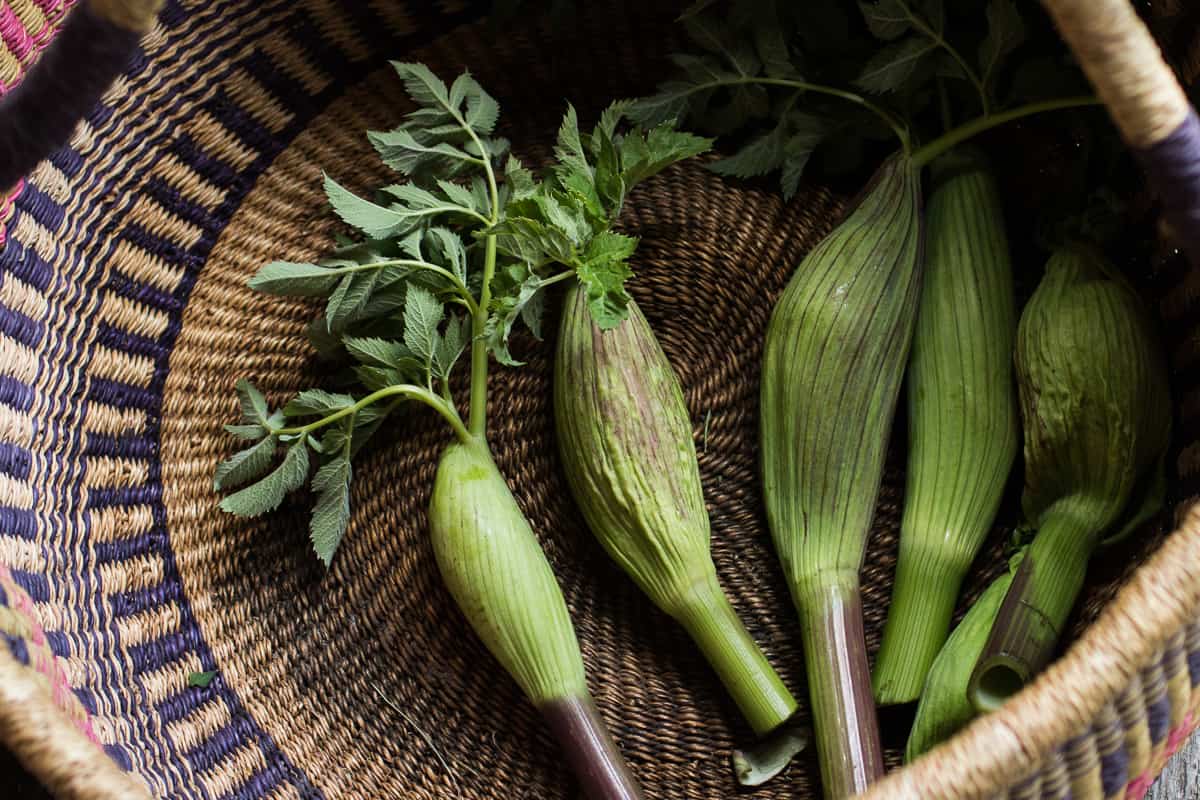
I love that passage, and I love that book, just about as much as she says the Salentines love hunting their angelica.
Zavirne is their pet name for the plant in the local dialect, still spoken in places in Apulia, one of the capitols of Southern Italian poverty cuisine, and a goldmine for people who enjoy researching historical uses of wild plants, like me.
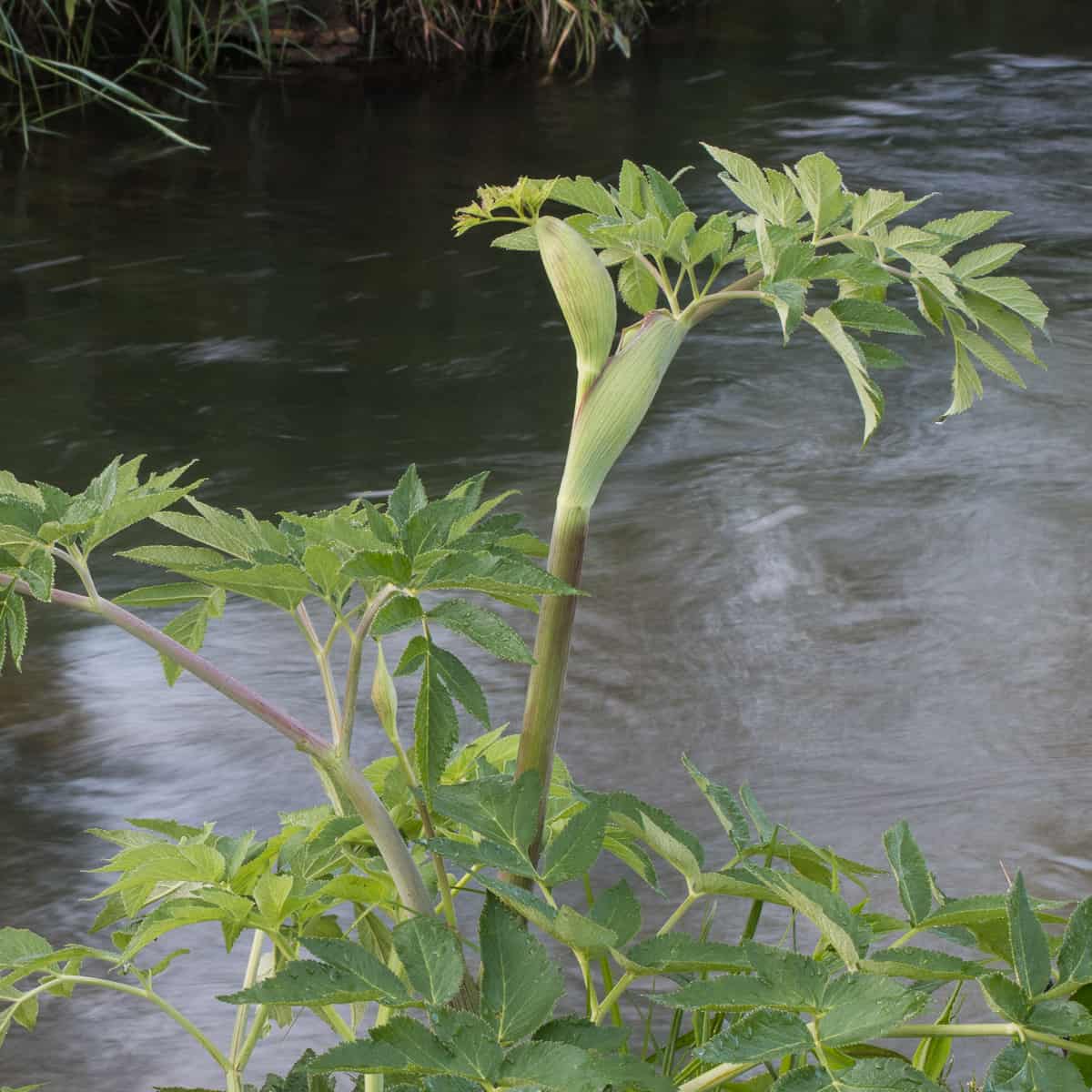
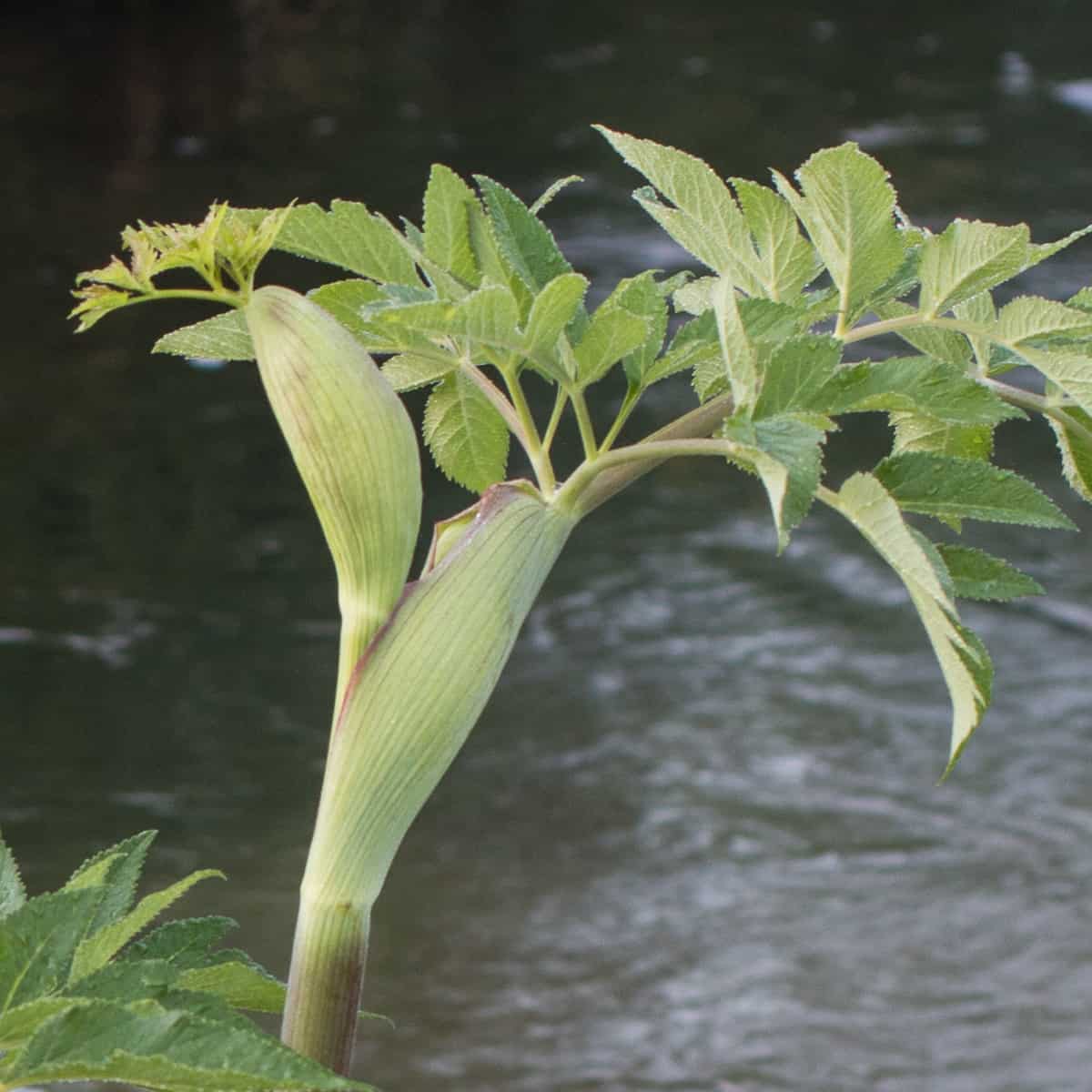
Cocoon Broccoli
Like some fairy vegetable from another time or world, angelica blossoms are one of the best things I've unearthed. I've been studying and reading different books on the Mediterranean and Apulia lately, and there's lots of other interesting things, but the blossoms in my mind, are just about peerless in their novelty, beauty, and potential as a next level food product.
I mean, c'mon, just look at these things! They're like perfumed broccoli in a cocoon! Last year, I'd wager the Bachelor Farmer (R.I.P.) became the first restaurant in the U.S. to serve large amounts of them when I supplied them with all the cow parsnip and angelica blossoms I could harvest during the season. Bringing them in, and seeing them served, was a proud moment for me.
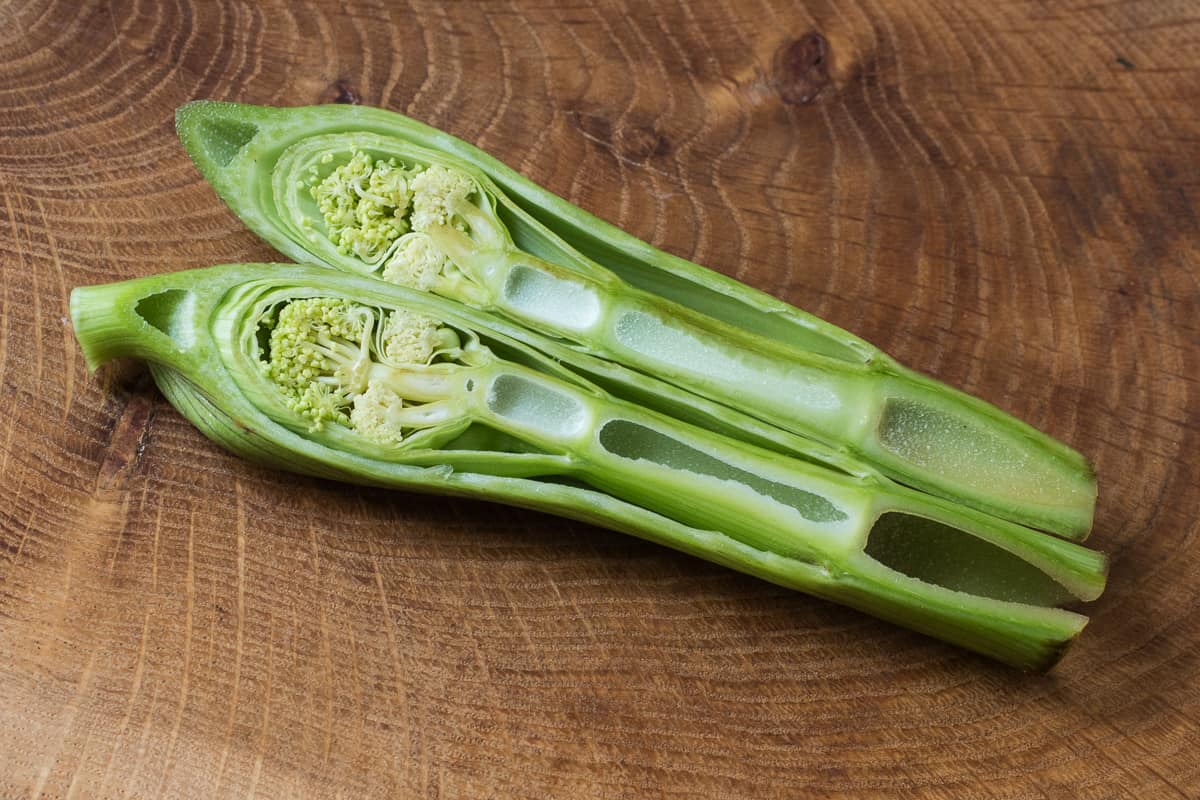
It took me awhile to figure out how to eat them though. I'd read about people in Italy selling some sort of Apiaceae blossom in markets on another website (I'd wager it was Smyrnium olusatrum or alexanders) that I talked about when I mentioned eating cow parsnip blossoms a few years ago.
I also knew my local Angelica atropurpurea that thrives in the wet valleys of Northwest Wisconsin made very similar blossoms too, but I'd eaten them cooked fresh and the flavor was so strong and medicinal tasting that I thought they'd never be worth eating. I thought cow parsnip blossoms, with their mild celery-esque flavor, would be the superior edible blossom. I was wrong, but my assumptions were logical.
The flavor of fresh angelica is so strong, so potent, that it has to be cooked somehow to not be offensive. The stems, as a vegetable, are frustrating to cook with. They're medicinal and aggressive tasting raw, so basic culinary logic would say that they could be paired with other strong flavors to tame their aroma. Not so.
Paired with too many flavorful things, angelica becomes submissive, and fades into the background becoming so soft it can be unnoticeable. But the blossoms are different, they can be cooked just like a vegetable.
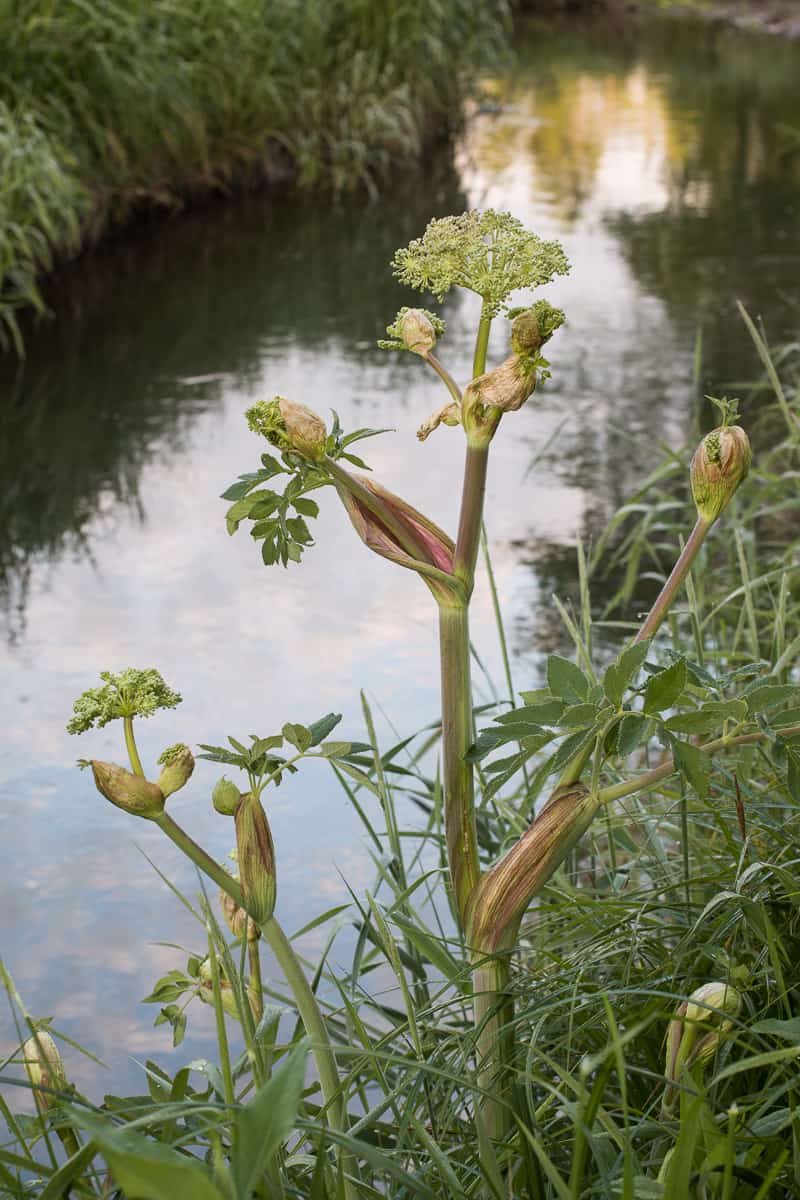
Meristem magic
The reason the blossoms can be cooked and enjoyed, I assume is hidden in the magic of meristematic plant tissue, that edible young growth we humans seek out without even knowing what it is. Garlic mustard is a good parallel.
Garlic mustard basal leaves I find pretty bitter, but the tender young shoots that come after the basal leaves I enjoy, since their flavor is more mild. If you know of other plants that have a similar story (a plant with strong tasting parts but young growth that's more mild), please leave them in the comments.
The really interesting thing, and the first thing I envisioned when I read Grey's passage, was that angelica, with it's perfume, would be more versatile than other blossoms. I was right.
Traditionally, angelica is thought of as something to candy and garnish cakes, since it's sweet perfume is so nice with fruit and sweets, but the blossoms and their curious flavor have to be one of the only things I've eaten that can be used both as a vegetable, or as a dessert, simply by changing a few ingredients.
I think they're great either way, but after gorging myself on them this week, for the time being I prefer angelica as a sweet, and the cow parsnip blossoms as a vegetable.
A Vegetable, and a Dessert
The angelica blossoms do need a little more attention than cow parsnip though. Some have been ok cooked from raw, some a little too perfumed, so, to be safe, at least for your first time, I recommend blanching them.
Grey's method says to boil them for a bit, then allow them to soak in cool water for an hour--a piece of interesting folk wisdom I've seen in a number of old Italian recipes that work with large amounts of wild plants, or strong tasting ones. Soaking a food in water, while borderline heresy in Classic European cookery, can be useful in purging strong flavors that are water soluble, a bit like soaking livers in milk or water.
Needless to say, I don't find my angelica needs the extended soaking Grey describes, but there could be some variation in flavors between different species since she ate Angelica sylvestris and Angelica archangelica, so if you try some and find it too strong tasting at first, you might try the extended, post-boil soak as plan b.
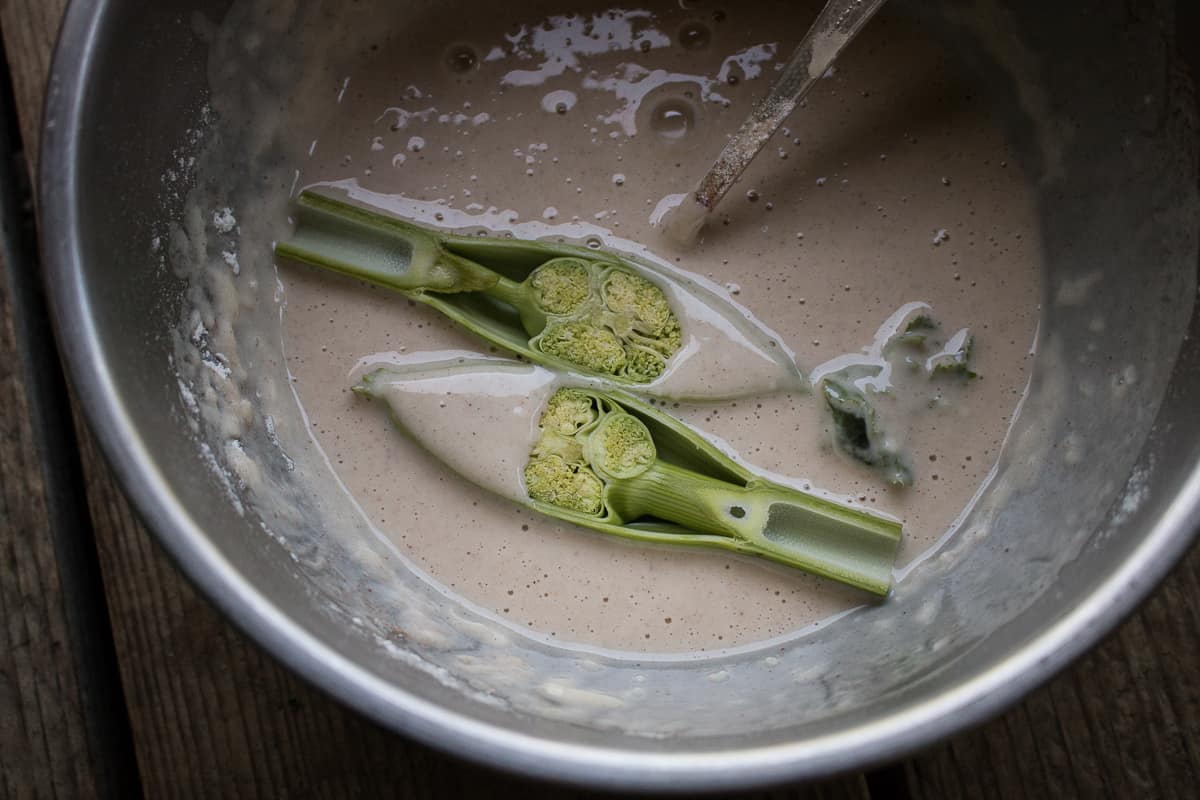
After they're blanched, you cook them. Grey mentions a few different things to do with the blossoms: simply grilled (unblanched, suprisingly) fried, and eaten as a salad with few other ingredients. Fried is what interested me first, as, in order for these to become dessert, a little crust or crispy something is in order.
My original fried blossoms use batter and a deep fryer, but I wanted these to be more approachable, so they can be done in a shallow layer of oil, or pan fried. After frying the angelica blossoms, you dust them with powdered sugar and drizzle them with honey.
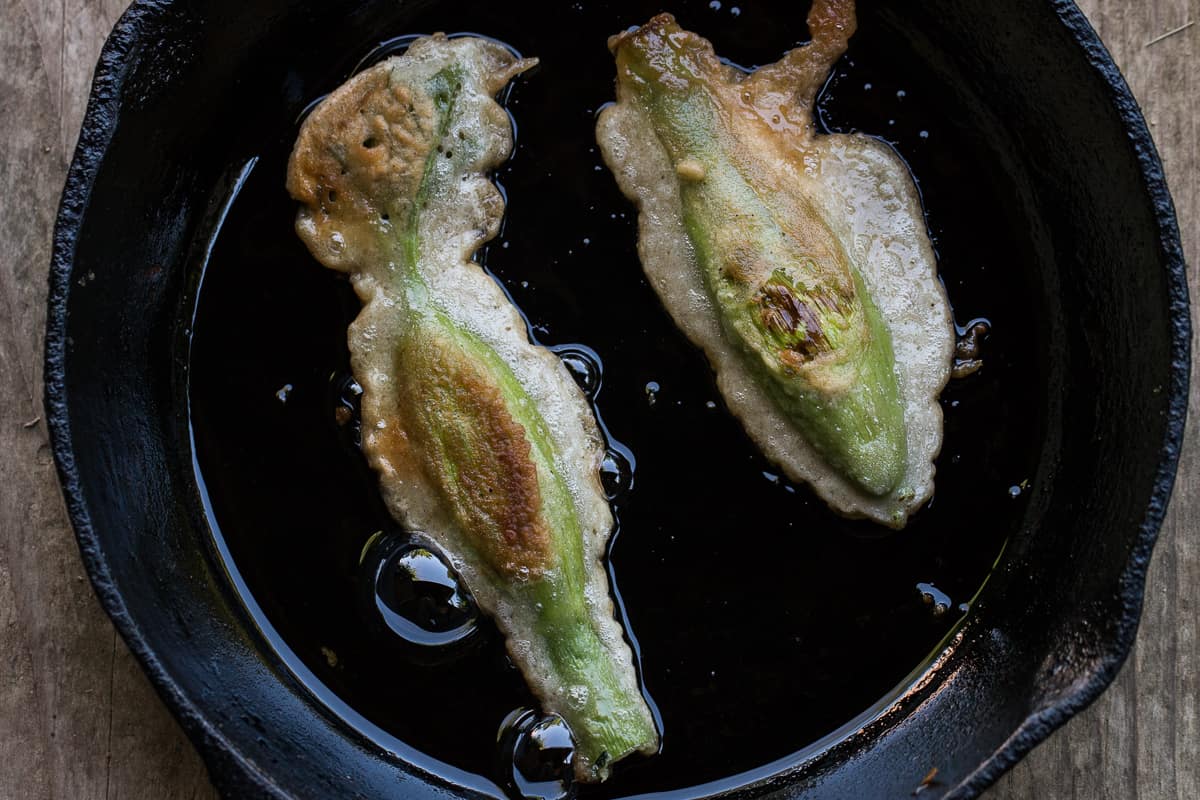
The finished product is a really unique experience, and the poster child for the different gifts plants give us when you catch them at the right time.
The scent of honey is eerily similar to the perfume of the angelica, and drizzled over the crust, piping hot out the pan, it's a bucket-list food, and, as one guest put it when I served him cow parsnip blossoms: "It's like eating something out of Harry Potter!". Truly.
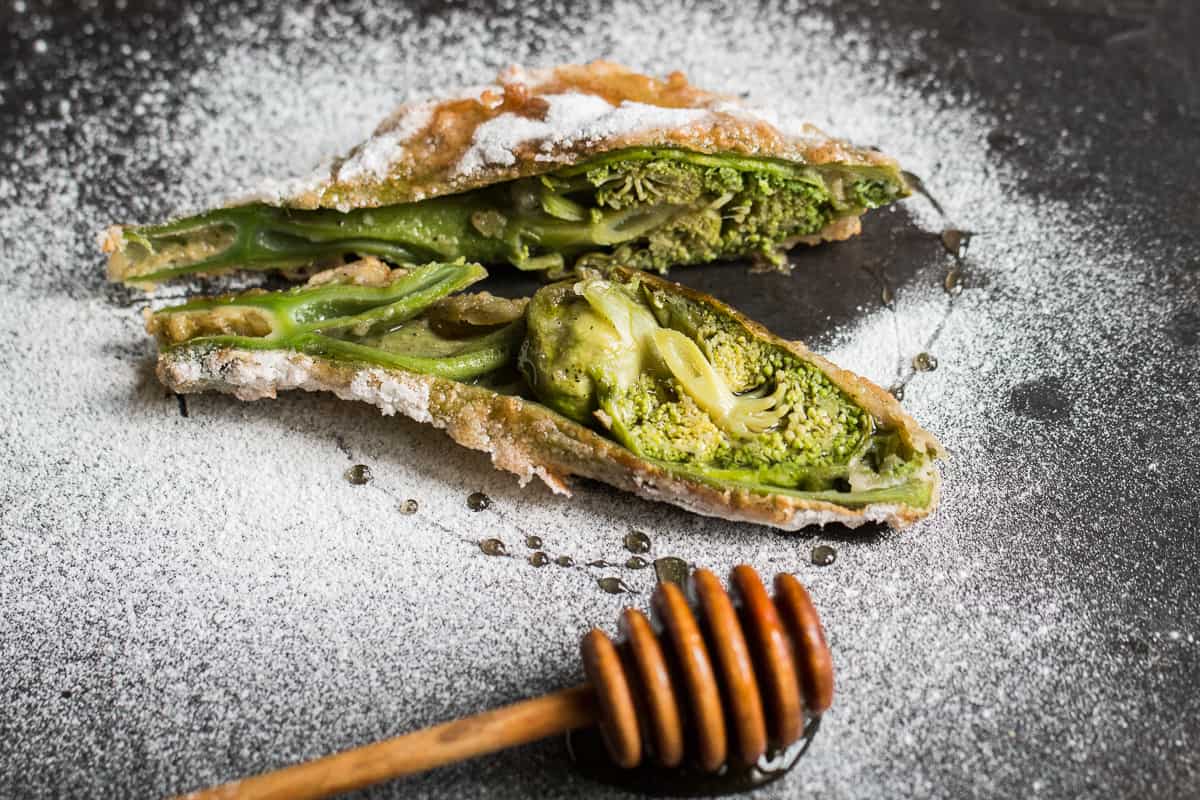
Sweet Fried Angelica Blossoms
Equipment
- 2 medium mixing bowls
Ingredients
- Angelica blossoms unopened, sheath removed, stem trimmed to an inch or two, or as long as your frying pot can accommodate.
- Highest quality honey for serving
- Powdered sugar for serving
- Flavorless oil for frying, as needed
- Dredge/Batter see note
- All purpose flour or similar
- Beaten egg
- A good dash of liquor like sambuca, gin, limoncello, etc or a dash of water
- Pinch of cinnamon
- Pinch salt
Instructions
- Whisk the egg and liqour if using. Mix the flour, pinch of salt and cinnamon.
- Blanch the angelica blossoms in a pot of rapidly boiling water for 5 minutes, then allow to cool in the pot. Remove the angelica and drain well.
- You really want to get all the moisture out here, since it will affect the finished crust of the fritter. Heat some oil (shallow fry will work if you’re careful, but for big batches I recommend a candy thermometer) until hot (350F).
- Meanwhile, using one hand for wet, one hand for dry to avoid looking like a child with a paper mache project, coat the angelica blossoms in flour, egg, flour and fry on both sides until golden brown.
- Serve hot dusted with powdered sugar, and honey on the side. You can eat them whole using a sharp knife, or cut them into ⅓rds, dust, drizzle and serve family style.
Notes
My flour-egg-flour batter is easy and designed to give you a crisp crust that’s easy to work with, that anyone can make with minimal equipment. That being said, deep frying is the best, and there’s more than one way to fry things for dessert. If you prefer things like pancake batter, etc, go ahead and use what you like.

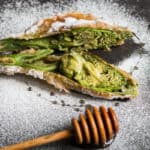
Stephen
I tried your recipe. I just boiled for 5 minutes and didn't leave to soak. I found the flavour way too perfumey for my taste so, personally, I would soak them if I was trying them again.
Alan Bergo
Did you cook with Angelica atropurpurea? I've noticed some interesting variation (intensity) in some collections. I just spoke with a gardener growing Kvann angelica and he says even well cooked it's near inedible, so expect variation in species. Last year Chef Jonathan Gans at the Bachelor farmer was throwing these same species pictured into saute pans and serving them fresh, unblanched--without a single complaint.
Stephen
I think they were Angelica sylvestris. They almost tasted good, just a bit too strong. The hour soak would probably be enough to take the edge off. I doubt I'll be able to get any more this year but I'll try the recipe again next summer.
megan
I'm so deeply grateful and thrilled consistently to read your detailed information and well tested recipes, Thank you so very much. I'm working on making some of your mushroom ketchup with some dryad's saddle now, looking forward it it. Our angelica patch is just coming up to head, so will certainly try this out. I love making mead with angelica.. Have you ever used the seeds as a spice? If so, how do you keep it? I haven't tried it but wonder if because of it's volatility it would need to be kept frozen? Any insight you have would be most welcome. Thanks, Megan
Alan Bergo
I have used the seeds as a spice--they're not for the faint of heart, and a little goes a long way. Theres a poundcake recipe on the site if you're curious.
Daniel
Alan you are a wizard. Amazing stuff. Does angelica grow up in Northeastern MN to your knowledge?
Alan Bergo
Yep. It could be our tallest wildflower in MN (can be over 8 ft) right now the flowers are a dead giveWay, prob a week or so out for them to bloom in your area. They like it wet, streams, rivers, etc. If you have a plant in question shoot me an email if you don’t feel comfortable, with a few decent pics I can ID remotely no prob.
nancy elder
I'M NOT A BIG FAN OF KALE BUT MY OVERWINTERED PLANTS SENT UP FLOWER STALKS LIKE BROCCOLI AND THESE I LIKE ALOT. THERE IS NOT A TRACE OF BITTERNESS. THICKER STALKS BENEFIT FROM PEELING, ALSO LIKE BROCCOLI. LOVE YOUR SITE AND NEW VIDEOS!
Alan Bergo
THANK YOU!
Tisa
I really enjoyed this article. Thank You!
Coop
You should probably warn people that neophyte foragers could mistake poison hemlock for angelica fairly easily. This is a plant that should only be eaten if you are absolutely positive of your identification. Both plants grow in similar situations and they look similar, and poison hemlock is a nervous system toxin. A very small amount can cause respiratory collapse and death. Thanks for posting!
Alan Bergo
A good thing to mention. Amateurs could make that unfortunate mistake in the younger stages of growth, but one smell, or a glace at the flower umbels which look nothing alike shows the difference.
Linda Reinhart
After seeing this week how many have missed the warnings about cow parsnip and burns, I think more attention should be paid to the warnings about angelica. Naturalist Dr. Boyd Shaffer warns in his book The Flora of South Central Alaska that there is some evidence that angelica and poison hemlock crossbreed. Therefore, he recommends that angelica never be eaten here, as hemlock is very deadly. I have dug the roots of angelica repens and they are chambered and smell like kerosene - signs of hemlock. Both hands and tools should be cleaned carefully before touching anything else as only a small amount of the hemlock is very toxic.
Pam Trenholm
Is this Angelica Archangelica? I have tons growing here and would love to try this,
Alan Bergo
Mine should be A. atropurpurea, but either will work. A archangelica is actually one of the species Grey mentioned specifically.
Daniele Kay
Hey there, Dried Angelica is paired with cod in Iceland. Helpful?
Alan Bergo
Super helpful! Paired in what way? Rehydrated?